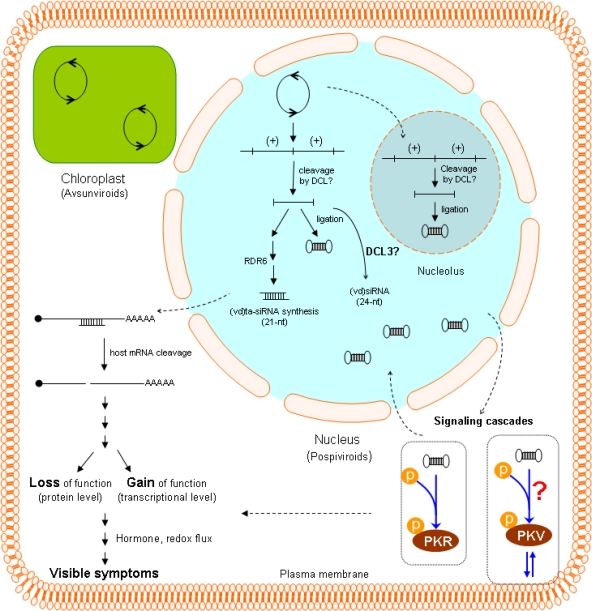Figure 3.
Schematic overview of viroid pathogenicity illustrating both direct and indirect interaction between the viroid genome and host cell. As discussed by Gomez et al. [69], RNA silencing mediated by (vd)ta-siRNAs appears likely to play a major role in disease induction by viroids like PSTVd or HSVd that replicate in the nucleus. The resulting cleavage of host mRNAs could lead to either loss or gain of function at protein level. PSTVd (and presumably other viroid RNAs) also activates at least two protein kinases, one of which (PKV) may be associated with the plasma membrane. Activation of the signaling cascades containing these kinases would then lead to perturbations in plant defense and hormone signaling pathways. Very little is known about siRNA synthesis associated with viroid replication in the chloroplast. Viroid replication in both the nucleus and cytoplasm proceeds via a rolling circle mechanism (indicated by open circles with opposing arrows). For viroids like PSTVd that replicate in the nucleus, various stages of replication appear to be localized in either the nucleoplasm or the nucleolus [75].

